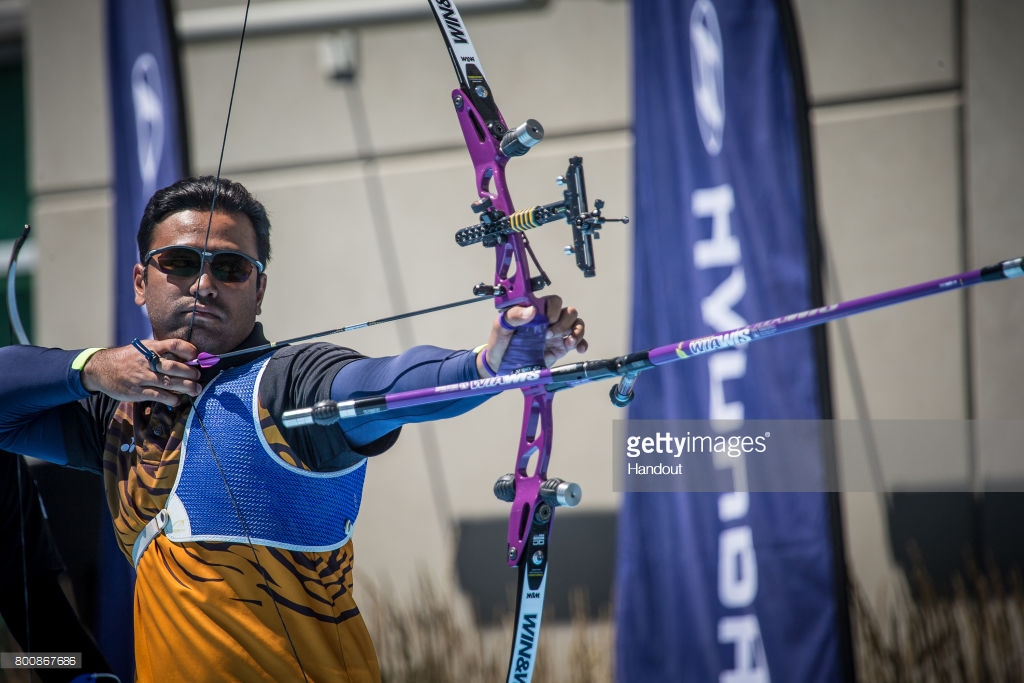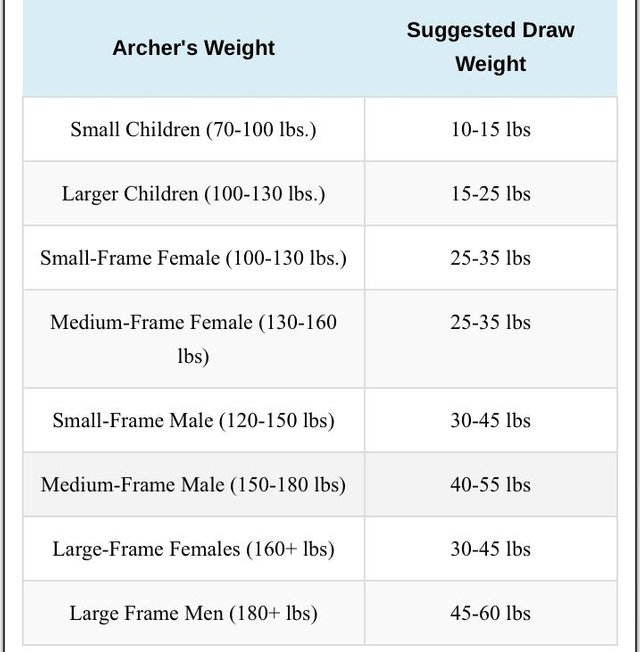How To Buy a Recurve Bow: Ultimate Guide

Step #1: Determine Your Draw Weight Requirements
Your first step should be determining your draw weight. This refers to the amount of force you need to apply to fully draw your bow (pull the string). To figure out a safe draw weight range for yourself, please see:

This is a critical step and you should start with it before you start looking at actual recurve bow models to buy.
Step #2: Do You Want To Hunt?
Every recurve bow is appropriate for target practice, but not every recurve bow is appropriate for hunting. Whether your bow will be suitable for hunting is determined primarily by its draw weight. Not everyone though is capable of handling the draw weight required for hunting (see draw weight chart above).
To figure out how much draw weight you need to hunt, see:
How Much Draw Weight Should You Get?
What is draw weight?
It’s the amount of force you must apply to the bow string in order to pull it through it’s full range of motion. It’s usually calculated in pounds.
What draw weight should I choose?
If you want to use the recurve to hunt for the most popular game (deer, elk, turkey), you need 40 lbs. draw weight or more (preferably 45)
If you want to hunt for the largest game (grizzly bear, ox, cape bufalo), you’ll need 55 lbs. or more
If you want to use the recurve for target shooting, any draw weight will do – even 25 lbs.
If you want a recurve for both hunting and target practice, go for 40 lbs. or more.
You will adapt to higher draw weights very quickly; what may seem somewhat difficult one day, will become much easier after shooting a few hundred arrows. Stay patient and don’t push yourself – your muscles will adapt rapidly. See a list of our recommended recurve bows for hunting.
Very Important Note :
If you’ve never shot a recurve bow before, then you probably don’t know what kind of draw weight your muscles can handle. The smaller your frame, the less of a draw weight you’ll be able to work with. For this purpose, I’ve created a recurve bow draw weight chart – simply look up your body type in the chart and see the corresponding draw weight range to know what you will be able to handle. Also, you might want to read up about the capabilities of different draw weights on a recurve bow.
Step #3: Compare Recurve Bows
Now that you know what draw weight you need, you can choose your recurve bow. We have prepared a number of excellent comparison charts to help you do just that. Each chart makes it easy for you to compare draw weight and other stats. Here are our most popular comparison lists:
-Top 10 recurve bows overall
-Best recurve bows for beginners
-Best recurve bows for hunting
-Best cheap recurve bows
Take your time to browse through these lists and find a few recurve bows that you like. Make sure they feature a draw weight appropriate for your needs as determined earlier.
Step #4: Read Our Reviews
The next step is to read reviews of the recurve bows you are interested in. You want to learn about the pro’s, con’s, what to expect, how much they cost, and so on.
Step #5 Choose Your Arrows
Important: there is some experimentation involved with arrows. Don’t attempt to buy the “perfect arrows” your first time around as this is impossible. Start out with some good arrows and after you acquire a bit of experience, you can buy some different ones and experiment. Arrows behave differently depending on the archer, the bow you have, shooting distances etc. There is no such thing as “the right arrows for a certain bow.” You’ll need to experiment a bit, there’s no way around this.
That’s all for this post I will continue more about arrow in next post .
Please follow me @trashtalk96 and don’t forget to upvote and comments below 👴🏻
Congratulations @trashtalk96! You received a personal award!
Click here to view your Board
Congratulations @trashtalk96! You received a personal award!
You can view your badges on your Steem Board and compare to others on the Steem Ranking
Vote for @Steemitboard as a witness to get one more award and increased upvotes!